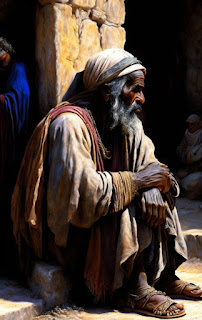Gnosticism for Beginners
Gnosticism is an ancient religious tradition that has captured the imaginations of people throughout history. Its unique cosmology, mythology, and ethical teachings have inspired countless individuals to seek spiritual enlightenment and a deeper understanding of the world around them. In this article, we will provide a brief overview of Gnosticism, its history, the various sects, and some book recommendations for beginners.
Overview of Gnosticism
Gnosticism is a complex and diverse religious tradition that emerged in the Hellenistic world around the 1st century CE. The term "gnosticism" comes from the Greek word "gnosis," which means knowledge. Gnostics believed that true spiritual knowledge could only be attained through direct experience and revelation, rather than through traditional religious institutions or scripture.
Gnosticism is characterized by its unique cosmology, which often involves a complex hierarchy of spiritual beings and multiple levels of reality. Gnostics also believed in the existence of a divine spark within each individual, which could be liberated through spiritual practice and self-knowledge.
History of Gnosticism
Gnosticism likely emerged in the Judeo-Christian context of the 1st century CE, and was influenced by a variety of religious traditions, including Judaism, Christianity, and various mystery cults. Gnosticism spread throughout the Mediterranean world, and was particularly popular in Egypt, where many important Gnostic texts were discovered in the 20th century.
Despite its popularity, Gnosticism was often seen as heretical by mainstream Christian authorities, and was persecuted throughout the early centuries of the Christian era. Many Gnostic texts were destroyed, and the tradition largely disappeared by the 5th century CE.
Varieties of Gnostic Sects
Gnostic sects varied widely in their beliefs and practices, and it can be difficult to generalize about the tradition as a whole. However, several sects have been identified by scholars based on surviving texts and historical accounts. Some of the most important Gnostic sects include:
- The Sethians: This sect emphasized the role of Seth, the third son of Adam and Eve, as a divine figure who transmitted secret knowledge to his followers. The Sethians also believed in a complex hierarchy of spiritual beings and a dualistic cosmology that saw the material world as inherently flawed and corrupt.
- The Valentinians: This sect was founded by the teacher Valentinus and emphasized the importance of gnosis, or spiritual knowledge, in achieving salvation. The Valentinians also had a complex cosmology that included a divine realm of Aeons, or spiritual beings, and a material world created by a lower god.
- The Ophites: This sect revered the serpent as a symbol of spiritual wisdom and liberation, and saw the biblical story of Adam and Eve as a metaphor for the human journey towards enlightenment. The Ophites also believed in a dualistic cosmology that saw the material world as inherently evil.
- The Cainites: This sect revered the biblical figure Cain as a divine figure who transmitted secret knowledge to his followers. The Cainites also had a complex cosmology that included a hierarchy of spiritual beings and a dualistic view of the world.
- The Barbelo-gnostics: This sect emphasized the role of the divine feminine, personified as the goddess Barbelo, in the process of spiritual liberation. The Barbelo-gnostics also had a complex cosmology that included multiple levels of reality and a dualistic view of the world.
Book Recommendations for Beginners
For those interested in learning more about Gnosticism, there are many excellent books available. Here are a few recommendations for beginners:
- "The Gnostic Gospels" by Elaine Pagels: This book provides an overview of the various Gnostic texts
- "Gnosticism: An Introduction" by Nicola Denzey Lewis: This book offers a concise and accessible introduction to the history, beliefs, and practices of Gnosticism.
- "The Nag Hammadi Library" translated by James M. Robinson: This collection of Gnostic texts, discovered in Egypt in 1945, is an essential resource for anyone interested in studying Gnosticism.
- "The Gnostic Bible" edited by Willis Barnstone and Marvin Meyer: This anthology includes a wide range of Gnostic texts from various sects, as well as essays and commentary by leading scholars.
- "The Secret Teachings of Jesus: Four Gnostic Gospels" translated by Marvin Meyer: This book presents four Gnostic texts that offer alternative perspectives on the life and teachings of Jesus.
- "The Gospel of Thomas: The Hidden Sayings of Jesus" translated by Marvin Meyer: This Gnostic text, discovered at Nag Hammadi, includes 114 sayings attributed to Jesus and offers a unique perspective on his teachings.
- "An Introduction to Gnosticism" by Nicola Denzey Lewis: This book offers a concise and accessible introduction to the history, beliefs, and practices of Gnosticism.
Overall, Gnosticism is a fascinating and complex religious tradition that continues to inspire spiritual seekers and scholars today. Whether you are a beginner or a seasoned scholar, there is always more to learn about this rich and diverse tradition.
Art: Barbelo, by Che



Comments
Post a Comment